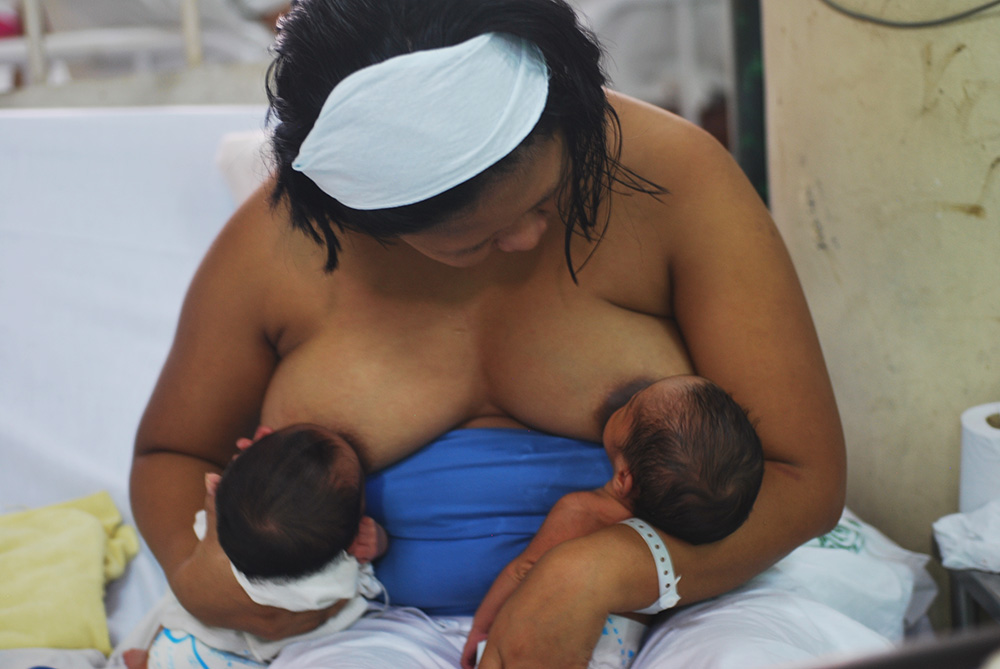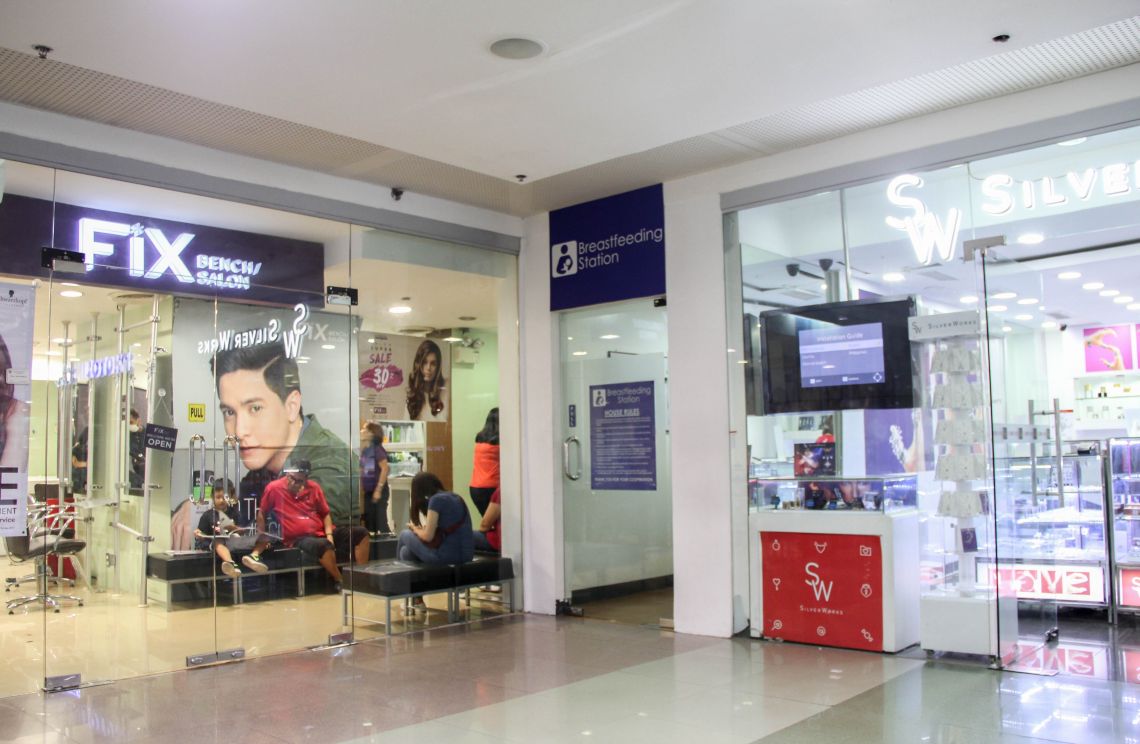By PHILIP PARAAN
PHOTOGRAPHER-writer Angelica Carballo’s artistic eye turns to breastfeeding as the subject of her first photo-documentary exhibit “Padede” at the GSIS Museum in Pasay City.
Carballo documents filial moments of nursing women and their children, and other scenarios that encourage breastfeeding.
“This intends to create an inspiration for women, that their body is enough to give their child the best starts in life,” she says.
The exhibit, which opened reveals much of this photographer’s sense of narrative and eye for detail. Her visual storytelling includes a young mother feeding her twins, suggesting how she struggles to meet their demands.
In one of her photos, she documents Rorie Fajardo, her former boss who got her into breastfeeding and nurtured her three-year-old son while working. There is also a photo of breast milk in bottles being prepared for donation to Cagayan de Oro’s orphaned babies and those whose mothers are having lactation problems.
A much talked about photograph is that of Mother Mary with an exposed breast nursing the infant Jesus. This is the Our Lady of the La Leche, who is the patron of mothers and mothers to be. It was taken during an exhibit of Radio Veritas in October 2011.
For Carballo, this is the most definitive photo because, for something very natural such as breastfeeding, a lot of people seem to be shocked to see this image and more so to learn that it has been sanctioned by the Catholic Church.
According to her notes, the Vatican announced in 2008 that it “welcomes more breastfeeding images and pictures of Mama Mary and Jesus,” saying it was the word of God made flesh.
“Unfortunately, breasts have become sexual objects, which should not be; we’re not mammals for nothing,” Carballo notes.
In a country still in the grip of conservatism, capturing women’s breasts on camera is a sensitive matter. Thus, whenever Carballo is confronted with ideal images, having to take pictures of them means going through rituals of politeness of asking permission and careful explanations. It requires informing the subjects about the purpose of the photographs and making them comfortable. Still, as expected, some get conscious, ending up with unnatural and contrived reactions.
The rigors of photo documentary entail researching and immersing with subjects. For this project, she went around maternal wards and wet nursing units of the Fabella Hospital and the Philippine General Hospital.
For some photographers, a photo documentary will always have social and political undertones. In the same light, “Padede” is a visual argument on the positive effects of breastfeeding. It also seeks to engage social action through policy change and legislation.
There is power in photography. More than spreading awareness, it can provoke change.
In the book, Photography as Activism, renowned photographer Ed Kashi of the VII Photo Agency said that “a single image can make a change.” One of Kashi’s subjects, a young Nigerian boy whom he had photographed carrying a dead goat, was located by some civic groups and sent to school.
A recent viral photo circulated on the web shows a mother breastfeeding her baby while engaging a talk with Venezuelan President Hugo Chavez. This image touched the sensibilities of societies where breastfeeding is not allowed publicly.
Similary, Time Magazine created an uproar following a controversial cover photo by Martin Schoeller of a mother breastfeeding a three year old precariously standing on a bench.
Interestingly, her venture into photography, was caused by post partum blues after delivering her first baby three years ago. A trained writer, she found it frustrating that she couldn’t write.
Her husband Buck Pago (a documentary photographer himself) was her first mentor. He bought her a camera — a good, uncomplicated, and sturdy Nikon D60 that she still uses until today.
Carballo started the “Padede” project as a requirement of her Master Class in Documentary Photography (MCDP) under the tutelage of documentary photographer and professor Alex Baluyut. Carballo decided to pursue the topic after experiencing the joys of breastfeeding her children — Anna Katrina Leica, three years old, and Napoleon Boris, one year old.
At present, Carballo is a freelance writer and photographer, covering stories on women’s rights, public health, education, and persons with disabilities (PWDs). She is a member of the TALA Photo Collective (a group of Filipino women photojournalists), and the Freelance Writers Guild of the Philippines (FWGP).

